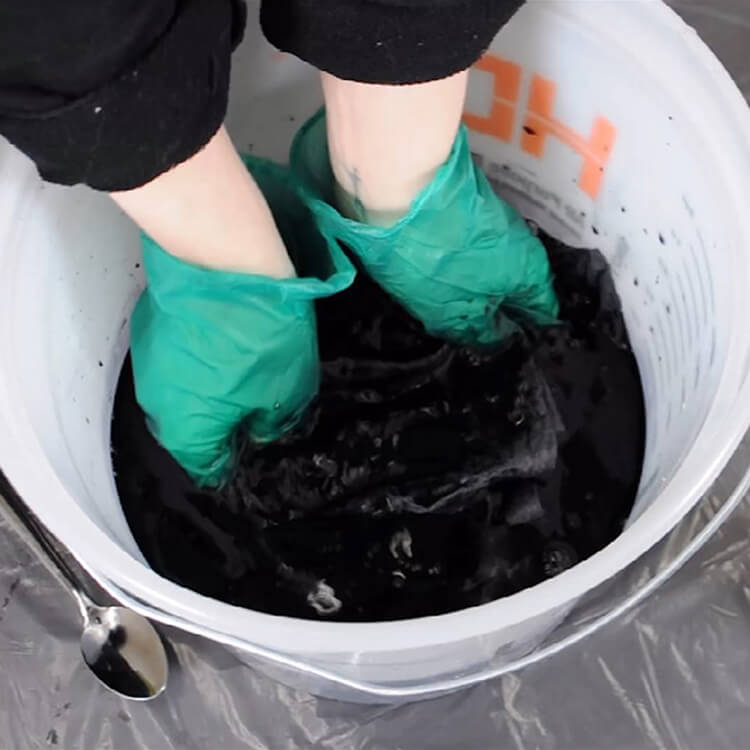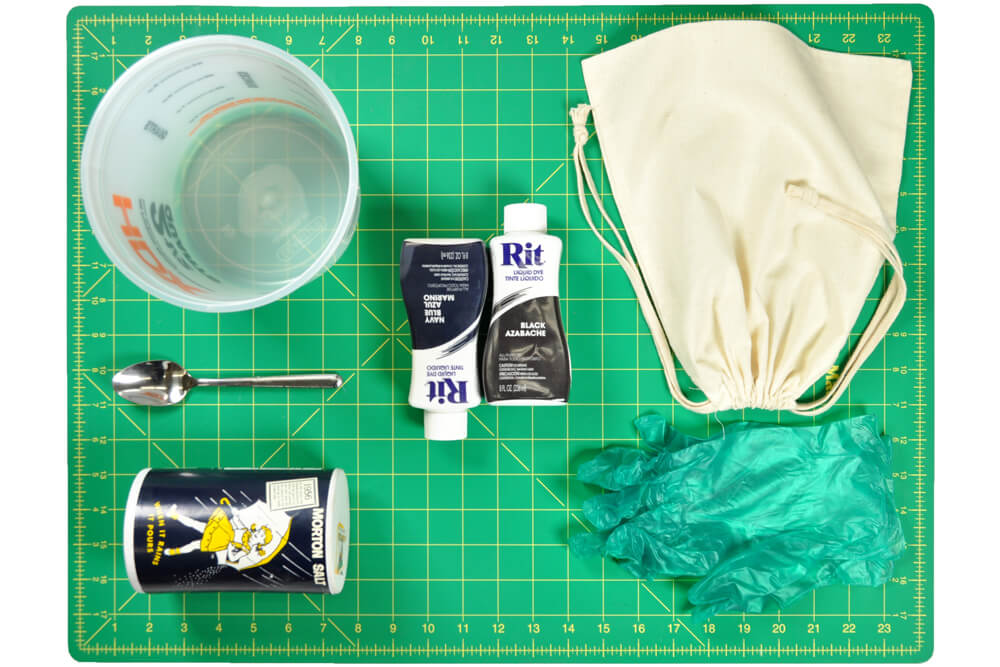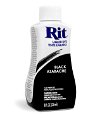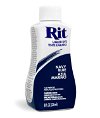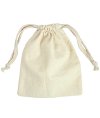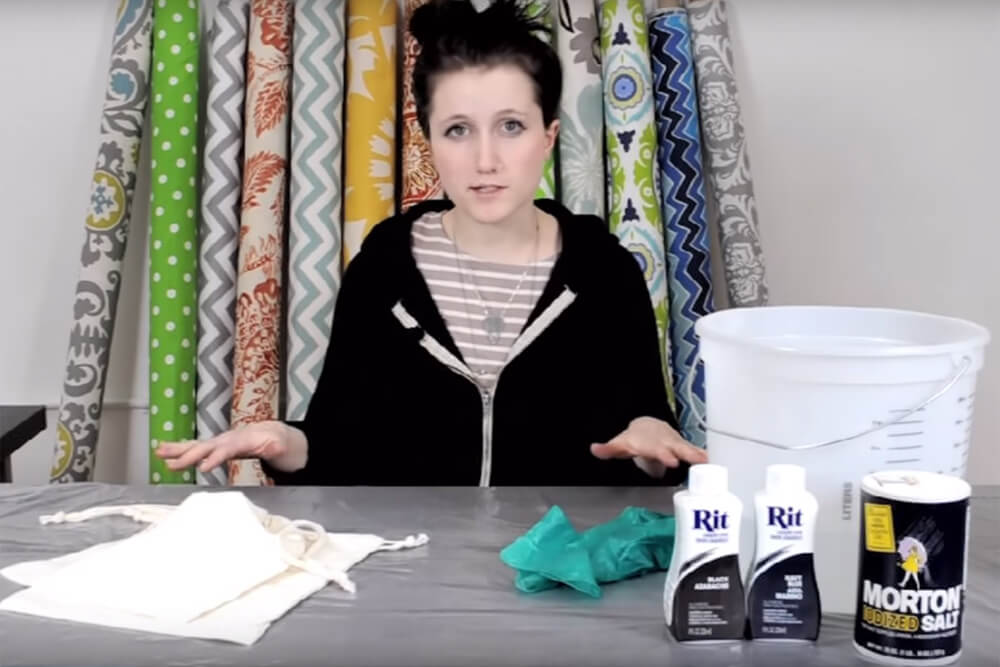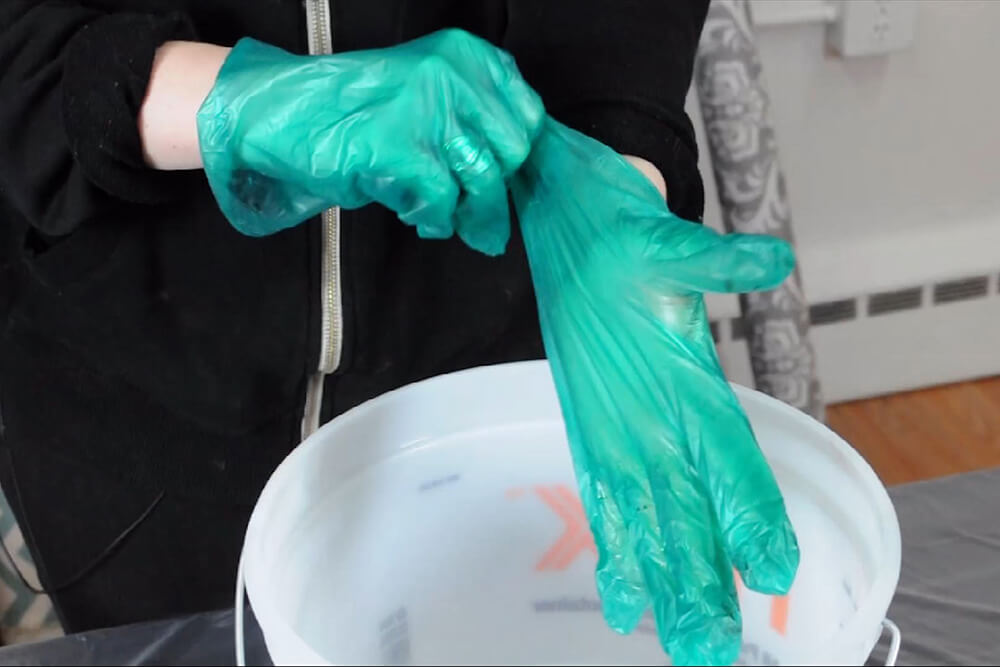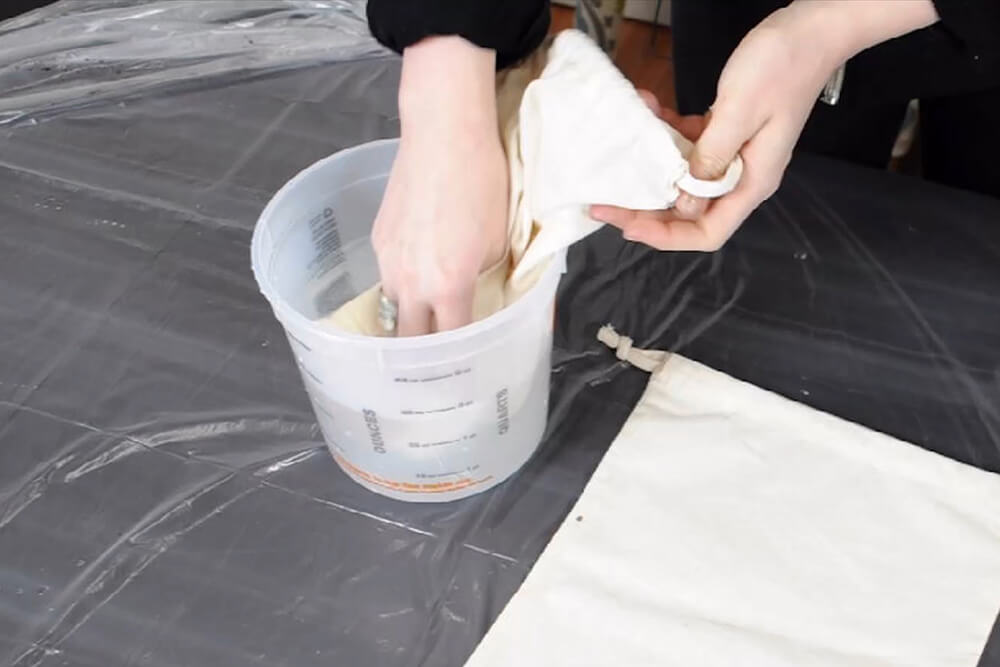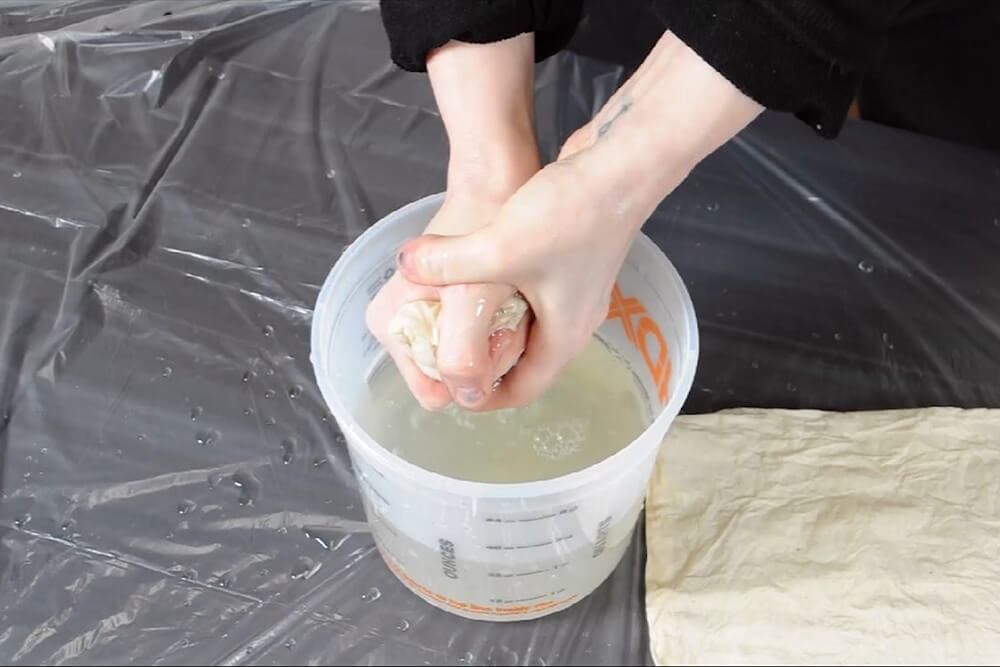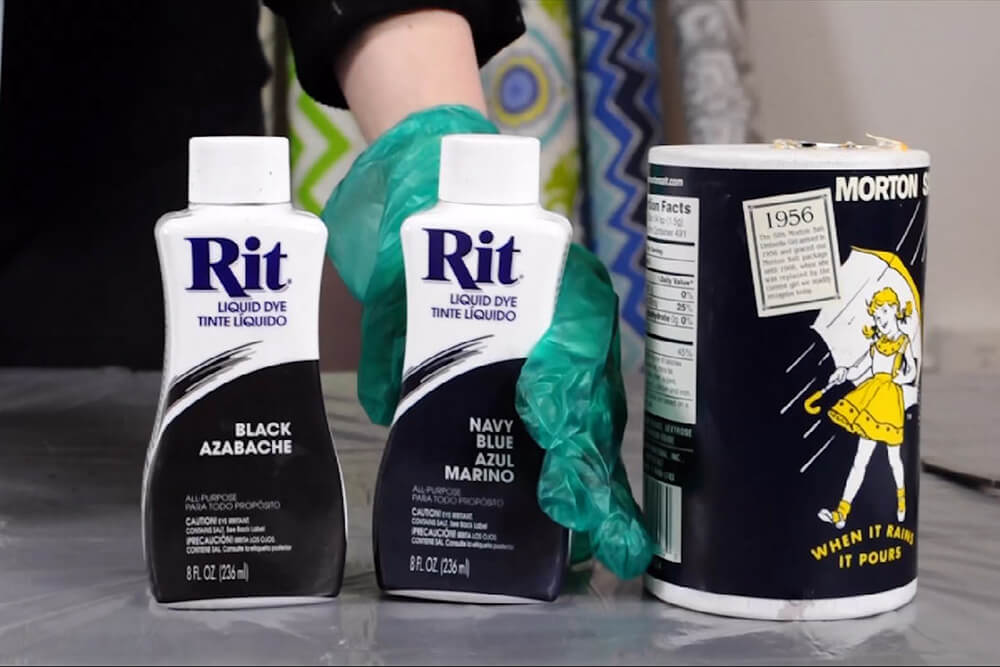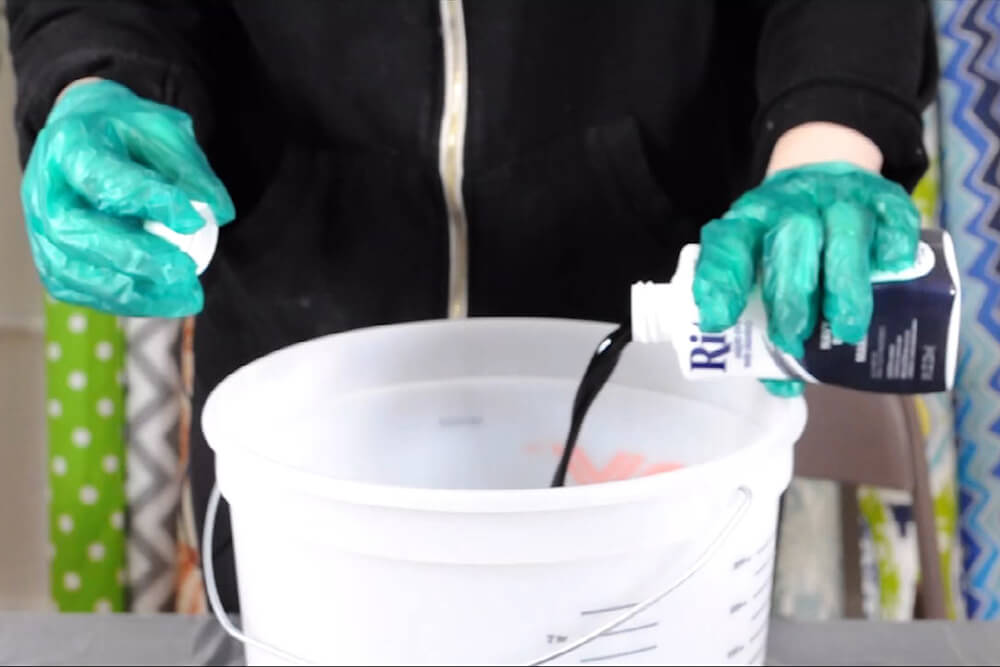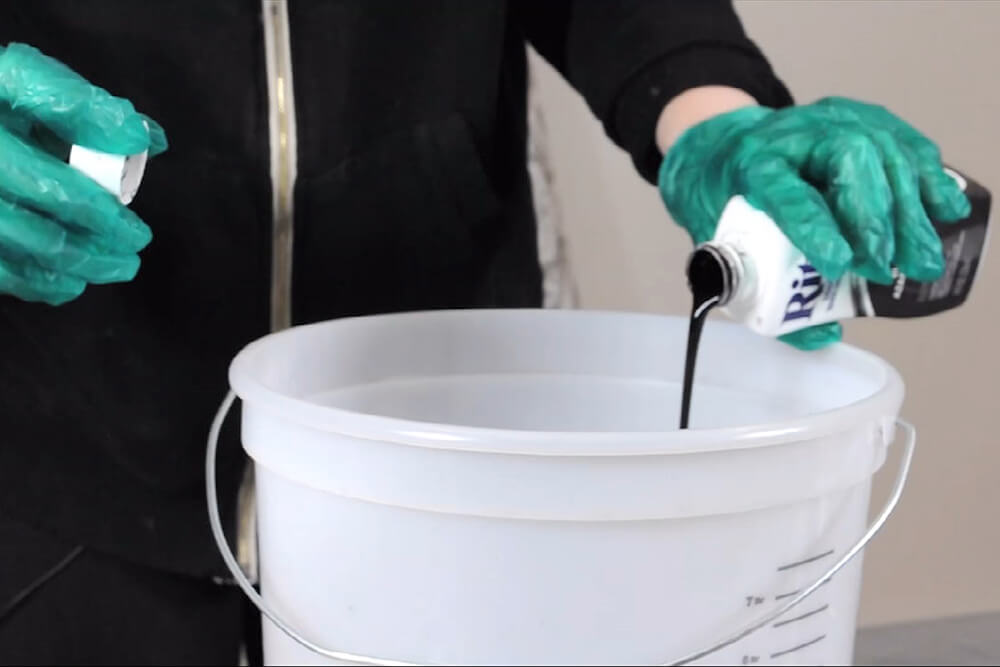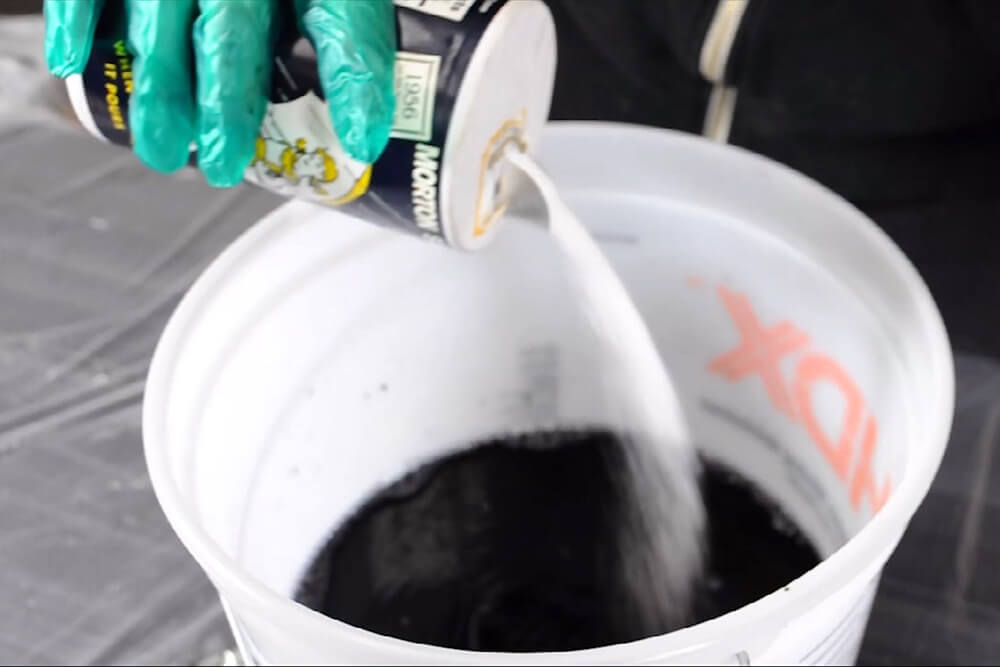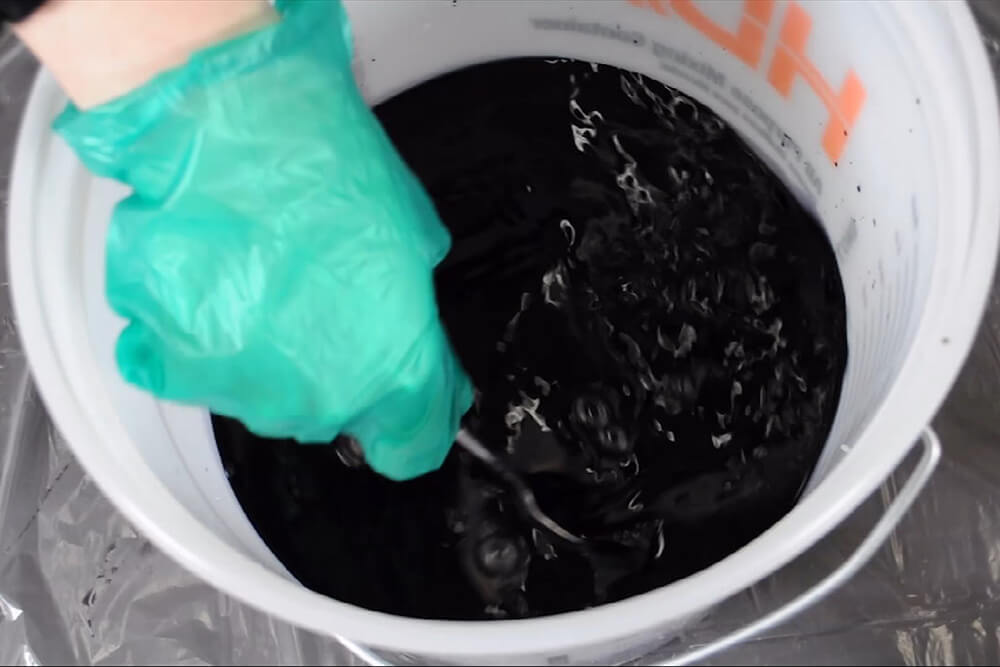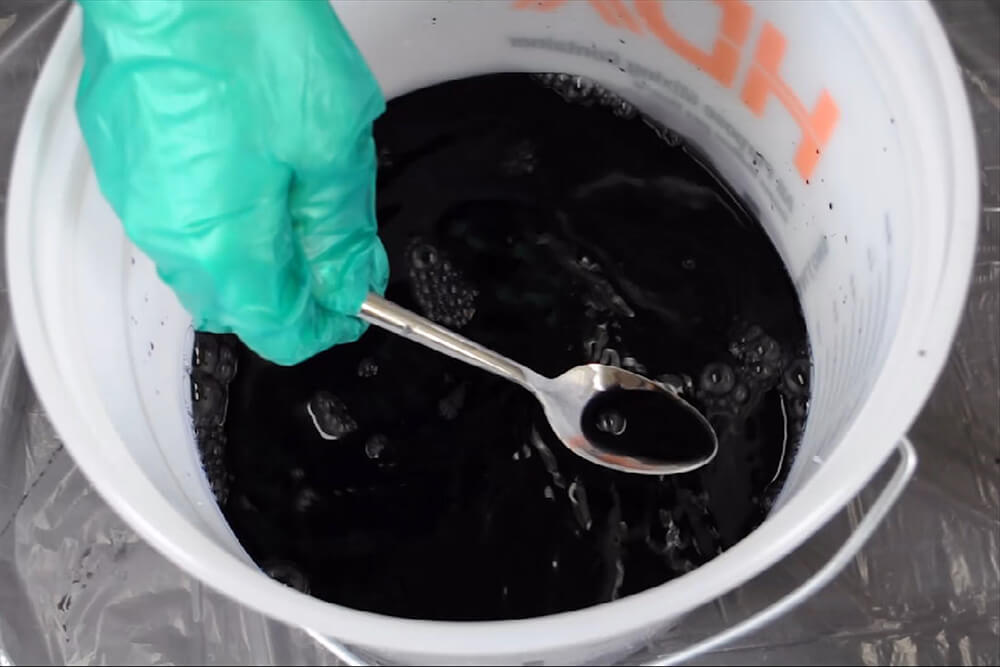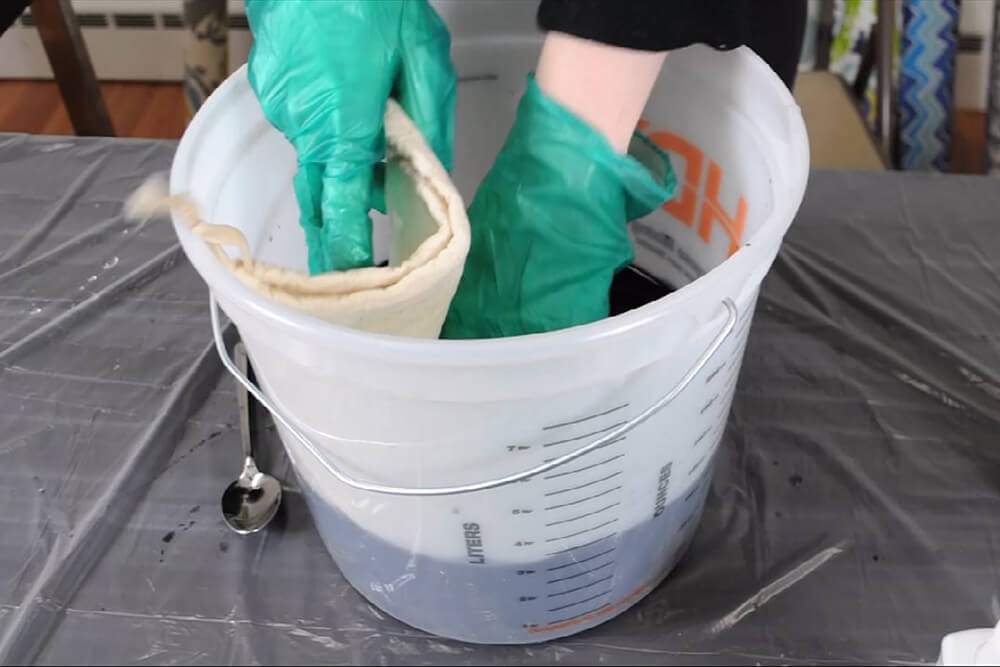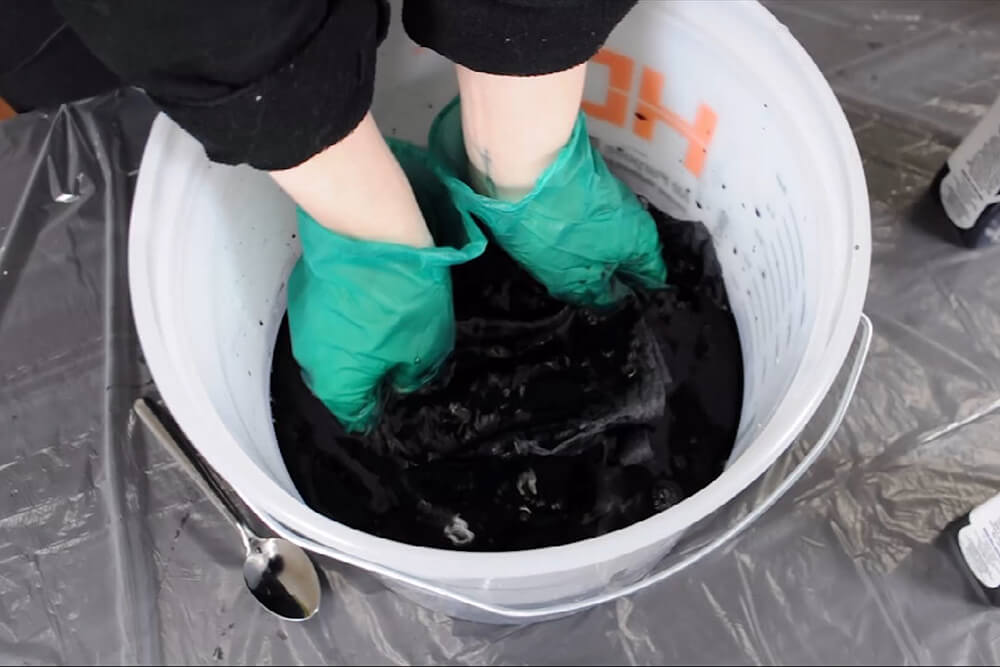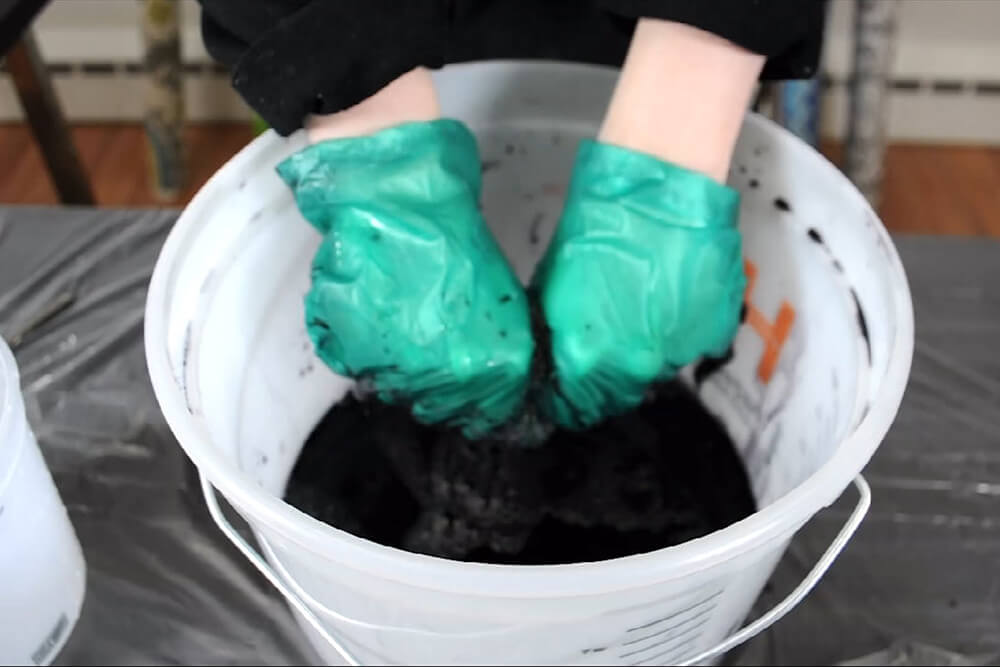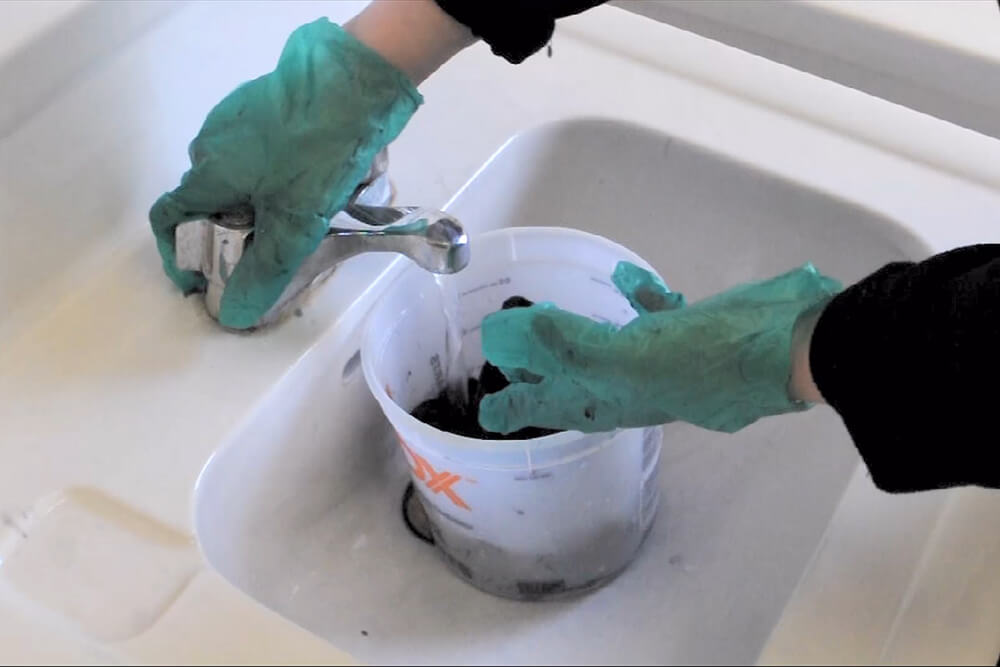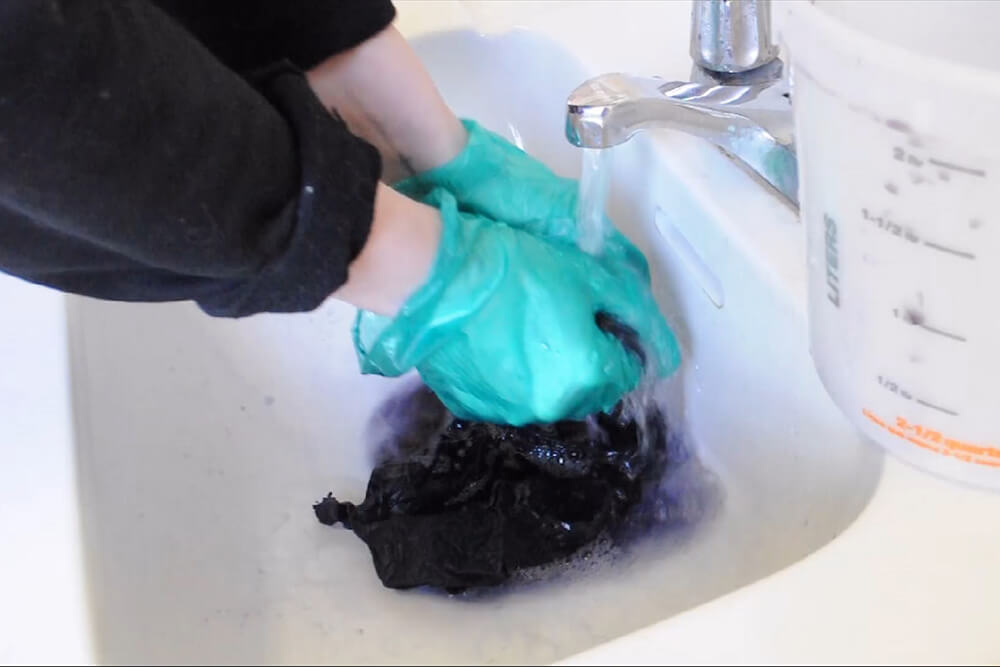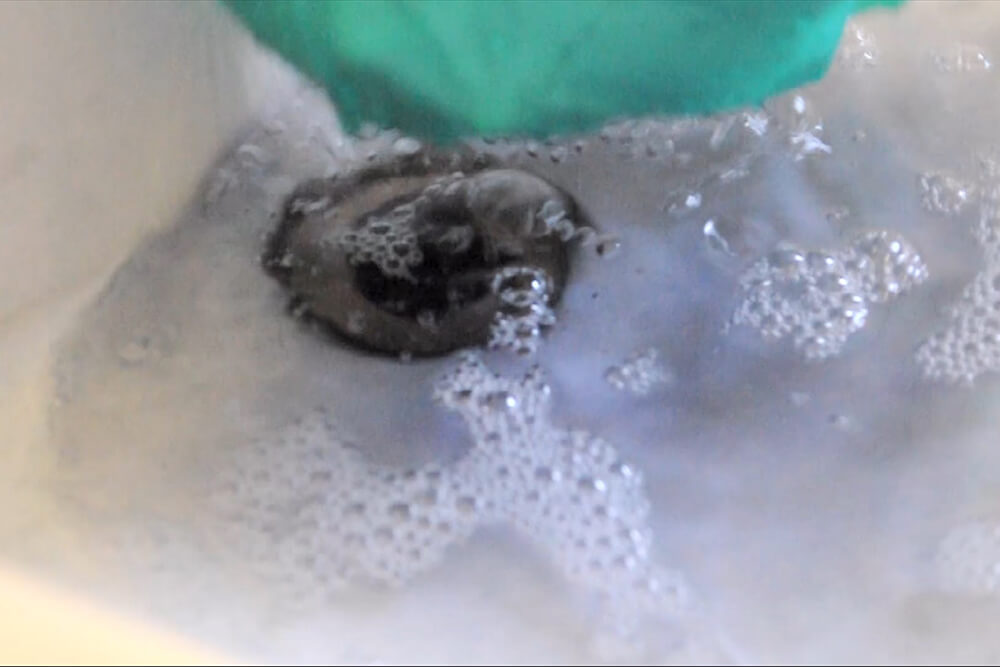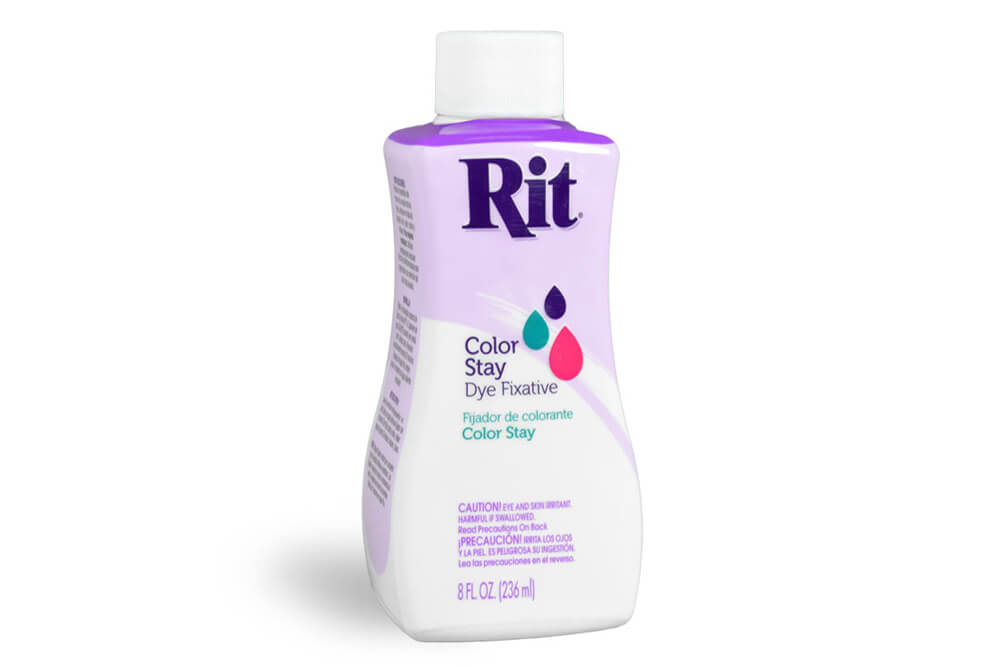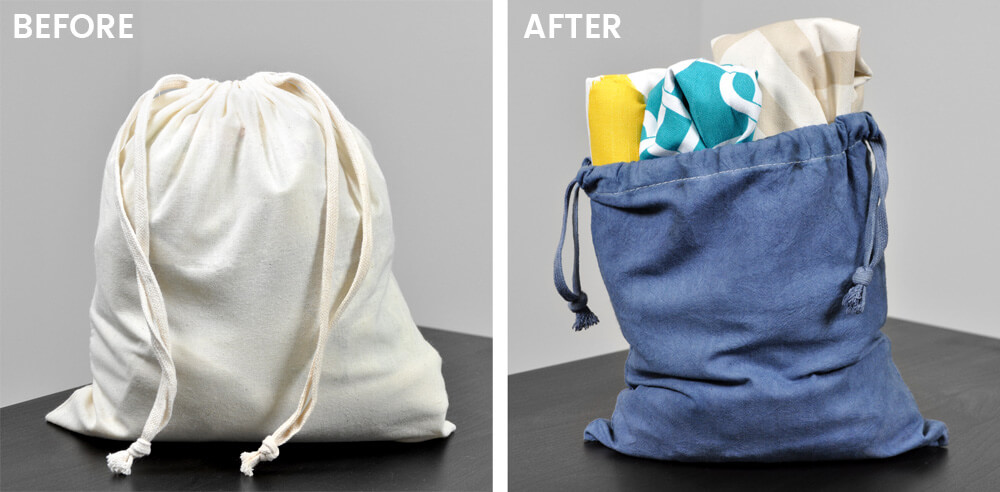How to Dye Fabric: Immersion Dye Technique
- By OnlineFabricStore
- Beginner
- 30 minutes + dry time
Since dye is one of the quickest and easiest ways to add color to a project or to an existing piece of fabric, today I’m going to be demonstrating a simple immersion technique using Rit Dye.
Rit Dye is great for all skill levels because it contains a mixture of several different types of dye, making it a really great option if you want to dye something that’s a blend or contains multiple kinds of fibers. For polyester and other synthetic materials, use Rit DyeMore.
Materials
- Rit Dye
- Pre-washed fabric (we're using a cotton bag)
- Buckets
- Gloves
- Salt
- A stick or spoon for stirring
Video
Instructions
Step 1: Prepare your work space and fabric
Before you start, it’s a pretty good idea to make sure that you have your work space covered. We just have a really cheap plastic drop cloth here. They’re pretty easy to find at the hardware store but anything you might have laying around your house is a good idea too– so a bed sheet, or a canvas drop cloth, or an old rag, just something to make sure that you’re not getting dye everywhere. You also want to make sure that you have some gloves, and an old hoodie or a t-shirt or apron.
Step 2: Preparing the dye bath
When mixing dye colors, it’s important to start with the lightest color first, and slowly add in your black or darker shades.
Make sure to use very hot water in the dye bath. The hotter, the better!
We’re going to start with some navy blue Rit dye. Since we’re dyeing about a pound of fabric, we’re going to add half of the container since the container will dye up to 2 pounds of fabric.
The last thing to do before adding the fabric into the dye bath is to add salt. It’s a good idea to use about 1/4 cup per 1/2 pound of fabric.
Step 3: Adding fabric to the dye bath
Air pockets from the bumps or bubbles in the fabric will give your finished product some inconsistencies which can be really pretty but ultimately are not what you’re looking for in a full immersion dye bath.
Once the dye bath is mixed, drop the fabric in. Make sure to mush it all around and be sure that there are no bumps or bubbles in the fabric. Let the fabric sit there for about half an hour, this will give it a nice, rich color.
Step 4: Rinsing the fabric
To rinse, start with hot water. This will open the fibers and make sure that you’re able to rinse out the dye.
Step 5: Caring for your dyed fabric
You can wash your dyed fabric any way you like, but if you want to keep the fabric looking clean and pristine, you’ll hand wash it gently in cold water. You may also want to use a fixative to reduce color bleeding.
For more information or specific questions about using Rit Dye, check out these Frequenty Asked Questions.
Looking for more fabric dyes? Browse our selection here.

